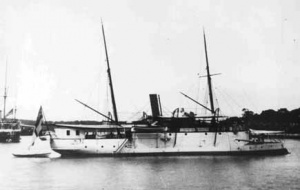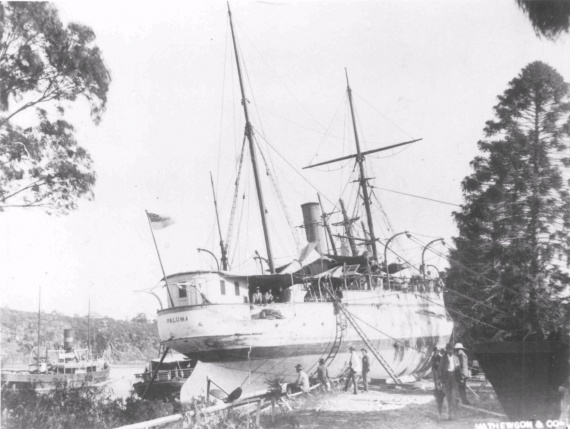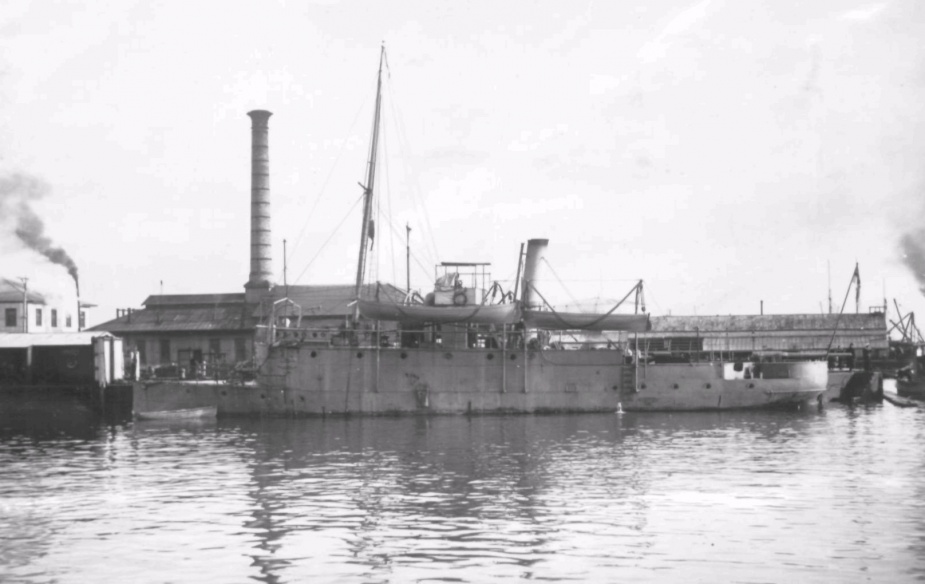HMAS Paluma (I)
| Class |
Gunboat Class |
|---|---|
| Type |
Gunboat (steel twin screw) |
| Builder |
Sir WG Armstrong, Mitchell & Co, Newcastle-on-Tyne |
| Commissioned |
May 1884 |
| Decommissioned |
1949 |
| Dimensions & Displacement | |
| Displacement | 360 tons |
| Length | 120 feet |
| Beam | 26 feet |
| Draught | 9 feet 6 inches |
| Performance | |
| Speed | 10.5 knots |
| Range | 700-800 miles |
| Capacity | 75 tons coal |
| Propulsion | |
| Machinery | Horizontal direct action compound steam engines, twin screws |
| Horsepower | 400 |
| Armament | |
| Guns |
|
Paluma and her sister ship Gayundah were the first vessels ordered by the Queensland government for the Queensland Maritime Defence Force. Their names are aboriginal words for 'thunder' and 'lightning' respectively. Built at a cost of £35,000 each, the vessels were of a 'flat-iron' design and mounted a formidable armament for their size. Both ships carried out trials on 26 September 1884 and reached a speed slightly over 10.5 knots in full power trials over a ten mile course.
An agreement had previously been reached between the Admiralty and the Queensland government for the Admiralty to fit out and employ Paluma for survey work in northern Australian waters. This was announced by the Admiralty on 28 July 1884. Consequently, following Paluma's trials, her main deck armament was removed and replaced by facilities for the surveyors, a deckhouse on the quarterdeck replacing the 6-inch gun and a work room forward replacing the 8-inch gun.
Paluma commissioned in the Royal Navy on 28 October 1884 under the command of Lieutenant George E Richards, RN. She reached Brisbane on 7 May 1885. For the next ten years, Paluma was engaged charting the waters of northern Australia, primarily within the Great Barrier Reef.
In 1893, Paluma, then under the command of Captain Pirie, RN, and undergoing refit between surveys was left high and dry in the Botanical Gardens by the great floods of that year. She was eventually refloated when a second flood enabled the government steamer Advance to haul her into the water. Fortunately Paluma had sustained no significant damage.
In March 1895, Paluma, having completed her term of survey duty with the Royal Navy, finally passed to the control of the Queensland government. She was immediately paid off, leaving only a care and maintenance party on board, but did provide training as required for Queensland Naval Brigade. The ship continued in her training role as a unit of the Australian Navy following Federation in 1901 and remained serving, mainly on harbour duties, until 1916.
Paluma was sold to the Victorian Ports and Harbours Department in 1916 and renamed Rip. She served until 1949, employed as a lighthouse tender and on carrying out a continuous program of blasting operations at the entrance to Port Phillip. She was finally broken up at Melbourne in 1950-51. Her place was taken by another Rip, the former HMAS Whyalla (I)






